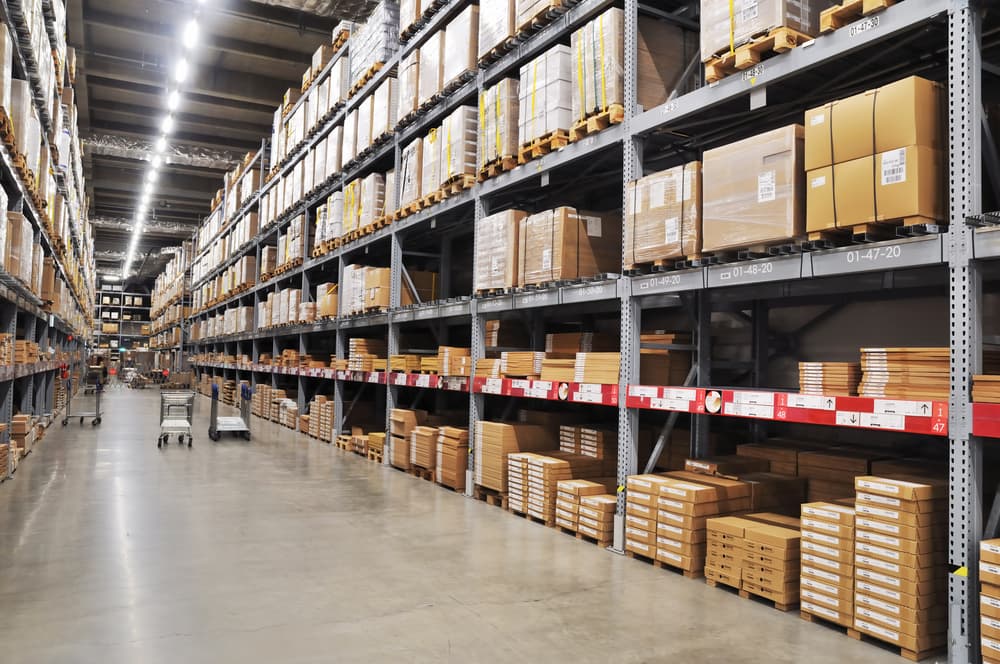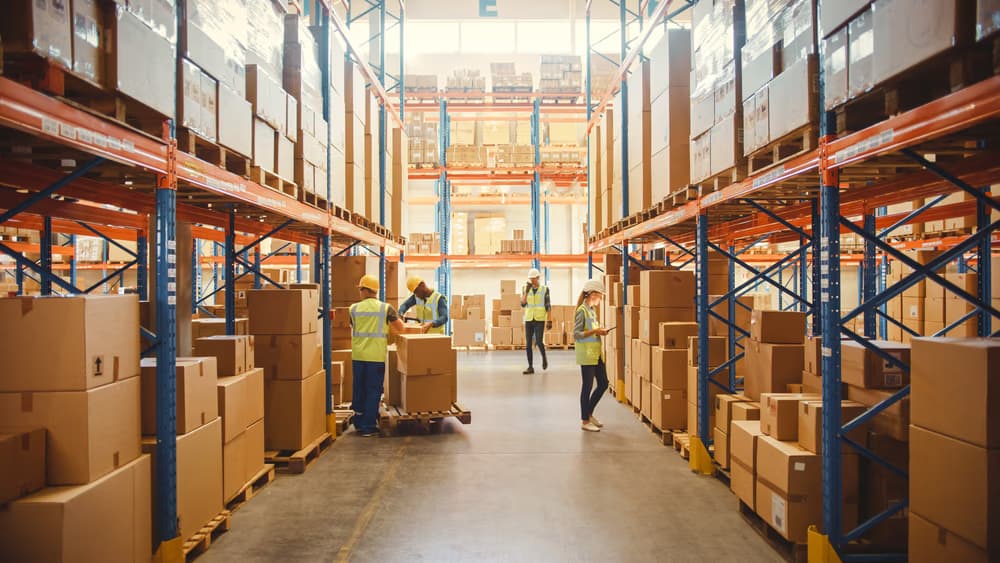This guide explains what a fulfillment center is, how it works, how it compares to a traditional warehouse, and how it fits into modern e-commerce and wholesale strategies.
A fulfillment center is a specialized facility used by businesses to store, pack, and ship products on their behalf. These operations are a core part of logistics and supply chain management, helping companies move products efficiently from seller to buyer.
How Do Fulfillment Centers Work?
Fulfillment centers work by streamlining the path from purchase to delivery. Here's how the process typically unfolds:
- Inventory is shipped to the fulfillment center by the business or supplier.
- Products are stored and tracked in the fulfillment center’s system.
- Customer orders are received, often through an integrated e-commerce or ERP platform.
- Items are picked, packed, and labeled according to order details.
- Shipments are sent out using carrier networks like FedEx, UPS, USPS, or regional delivery partners.
- Returns, if applicable, are processed through the same facility.
Some fulfillment centers operate exclusively for one business. Others serve multiple clients, sharing space and resources to lower costs and increase efficiency.
What Do Fulfillment Centers Do?
Fulfillment centers handle several key tasks:
- Storage and inventory control
- Order processing and packaging
- Shipping and last-mile delivery coordination
- Returns management and restocking
They act as an extension of your supply chain, taking on complex logistics so you can focus on product development, customer service, or marketing.
Fulfillment Centers vs. Warehouses
While the terms are sometimes used interchangeably, fulfillment centers and warehouses serve different functions.
Category | Fulfillment Center | Warehouse |
|---|---|---|
Purpose | Fast-moving inventory and order fulfillment | Long-term storage |
Activity Level | High-volume, frequent shipments | Lower activity, infrequent shipping |
Use Case | E-commerce, retail distribution | Bulk storage, slow-moving goods |
Staffing | Operated by 3PLs, often highly automated | Often managed in-house or leased space |
Warehouses are ideal for holding inventory over time. Fulfillment centers are designed for speed, automation, and real-time response to orders.

Why Businesses Use Fulfillment Centers
There are several reasons a company might choose to outsource to a fulfillment center:
Cost Efficiency
Running your own warehouse is expensive. It requires real estate, staffing, infrastructure, security, and ongoing maintenance. Fulfillment centers allow businesses to avoid these fixed costs.
Scalability
With a 3PL partner, you can scale up or down based on seasonal demand. This is especially useful for brands with variable order volume throughout the year.
Speed to Ship
Many fulfillment centers are strategically located to allow two-day or even same-day shipping. Orders are processed faster, improving customer satisfaction.
Reduced Overhead
You don’t need to hire warehouse employees, invest in barcode systems, or build out custom software. Fulfillment centers often come with all of this prebuilt.
Integrated Technology
Most 3PLs offer systems that integrate with e-commerce platforms, ERPs, and shipping APIs, providing full visibility across the supply chain.
Real-World Fulfillment Center Examples
Amazon FBA
Amazon’s Fulfillment by Amazon (FBA) is one of the most well-known fulfillment networks. Sellers ship inventory to Amazon warehouses, and Amazon handles the rest, from storage to delivery to customer service.
Rainbow OPTX
This sunglass brand grew rapidly and needed a flexible solution. Instead of investing in a warehouse, Rainbow OPTX partnered with ShipBob, a 3PL that allowed them to scale up during peak seasons and scale down during slower months.

Fulfillment Department Meaning
In many companies, the fulfillment department is responsible for the operational side of order processing. This includes managing the handoff between sales and logistics, ensuring orders are picked, packed, and shipped accurately and on time.
In businesses that use external fulfillment centers, this department often works closely with the 3PL provider to maintain quality control and real-time visibility.
Is a Fulfillment Center Right for Your Business?
Fulfillment centers are ideal for companies that:
- Sell products online or in retail stores
- Need to ship quickly and reliably across large regions
- Want to scale operations without hiring or leasing new space
- Prefer to focus on growth while outsourcing logistics
If your business is growing, expanding into new channels, or struggling to keep up with manual order fulfillment, a fulfillment center could be the right next step.
Rethink Inventory Management with Orderful
Whether you work with a 3PL or manage your own warehouse, clean data and seamless system integration are critical. Orderful's modern EDI platform connects your fulfillment process with your partners, trading systems, and internal teams in real time.
Talk to an Orderful expert today to learn how we can help streamline your fulfillment operations.
Frequently Asked Questions
What is a fulfillment center?
A fulfillment center is a facility that handles product storage, packing, and shipping for businesses, typically through a third-party logistics partner.
How do fulfillment centers work?
Fulfillment centers receive inventory, manage storage, process orders, and coordinate shipping so products can reach customers quickly and accurately.
What do fulfillment centers do?
Fulfillment centers pick, pack, and ship customer orders. They also manage inventory, process returns, and integrate with order management systems.
What is the difference between a fulfillment center and a warehouse?
A warehouse stores inventory for long periods. A fulfillment center moves products quickly from receiving to shipping, focusing on speed and delivery performance.
What does a fulfillment department do?
A fulfillment department oversees the flow of orders through inventory, packaging, and delivery, either internally or with help from a 3PL partner.
- 01How Do Fulfillment Centers Work?
- 02What Do Fulfillment Centers Do?
- 03Fulfillment Centers vs. Warehouses
- 04Why Businesses Use Fulfillment Centers
- 05Real-World Fulfillment Center Examples
- 06Fulfillment Department Meaning
- 07Is a Fulfillment Center Right for Your Business?
- 08Rethink Inventory Management with Orderful
- 09Frequently Asked Questions

